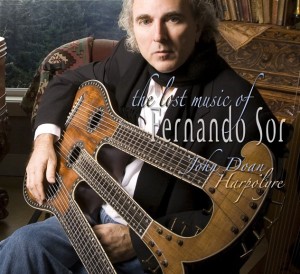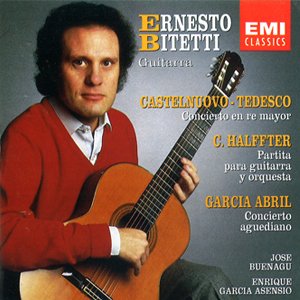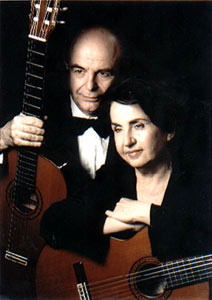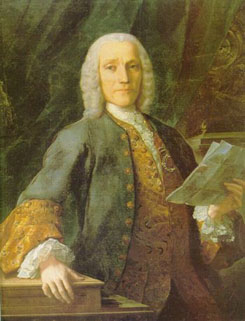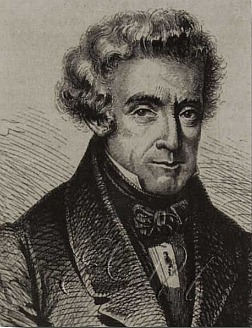Turíbio Santos (Turibio Soares Santos) is considered one
of the best Brazilian guitar players alive. His father, Turíbio Soares
da Silva Santos Filho, and his mother, Neide Lobato Soares Santos, also
from Maranhão, were joyful persons, fond of music and serenades. The
family moved to Rio de Janeiro in 1946, bringon also Turíbio’s newly
born sister, Giselda. The siblings Ronaldo and Cláudio were born in Rio
de Janeiro in 1948 and 1955, respectively. Upon their arrival to Rio,
the whole family lived together with Turíbio’s grandparents, Dona
Martiniana and Isaac Lobato, in the Tijuca district. Later, in 1948,
they moved to one of the earliest buildings set up in Copacabana, at
Avenida Nossa Senhora de Copacabana, 109, (Our Lady of Copacabana
Avenue, 109), near the beach, in front of the lifesaving station of
“Posto 2”. In 1950, and in that address, the family lodged Turíbio’s
oldest sisters, from his father’s first wife, Lilah and Conceição,
coming also from the state of Maranhão. Like their father, they also
were seresteiras (fond of serenades) and enjoyed to play the guitar. At
the age of 12, young Turíbio, accustomed to listen to the songs of his
father and sisters, asked her mother to be taught how to play the
guitar. His first lessons were ministered by Molina and Francisco
Amaral, the same musicians who teached his sisters. His progress was
very fast and amazed his family.
In 1955, at the U.S. Embassy in Rio, in his father’s company, Turíbio
Santos watched a movie in which figured the Spanish master
Andrés Segovia.
On that evening, he met three people that would become very influential
to his life: Antonio Rebello, (that would be one of his teachers),
Hermínio Bello de Carvalho (poet, producer, and one of Antônio
Rebellos’s pupil), and Jodacil Damasceno, (assistant guitarist to
Antônio Rebello). Rebello would give him a solid professional base,
Jodacil would open to him the whole universe of classic guitar, and
Hermínio, the universe of popular music, together with friends such as
Jacó do Bandolim, Ismael Silva, Paulinho da Viola, Clementina de Jesus,
Araci de Almeida, Dino 7 Cordas, César Farias, Nicanor Teixeira, Elizeth
Cardoso, Radamés Gnattali, and Pixinguinha.
Studying with Antônio Rebello, in 1958 Turíbio Santos met
Heitor Villa-Lobos,
in a lecture given by this composer at Escola de Canto Orfeônico
(Choral Singing School), in the Urca district. At the request of
Hermínio Bello de Carvalho, he writes meticulously down all details of
the lecture. This will result in the book “Villa-Lobos and the Guitar”,
published years later for the Museu Villa-Lobos. He continued his music
studies with private teachers, until coming to Edino Krieger’s hands.
They would eventually become great friends. In 1961, during a lecture
given by Hermínio Bello de Carvalho covering the work done by Turíbio
about
Heitor Villa-Lobos,
Turíbio played before Arminda Villa-Lobos and would eventually be
invited by her to record the first integral version of Villa’s “12
Studies” (dedicated to
Andrés Segovia), for the recently founded Museu Villa-Lobos.
Between reading stories (translated into Portuguese) in pocket books and
attending guitar classes, young Turíbio Santos tried to keep himself
loyal to his instrument. However, on those years, music was not
favorably regarded as decent means of making a living, and so he decides
to study at the Universidade Nacional de Arquitetura (Architecture
National University), in 1962. On July 27 of that same year he presents
his first concert, in his native city, São Luís, at Teatro Artur
Azevedo. His second one would be in at the ABI (Brazilian Press
Association), in Rio de Janeiro, on August 17, and the third one in
November, during the Villa-Lobos Festival, executing Mystic Sextet, in
first world audition.
In 1963, Turíbio Santos recorded in duet with Oscar Cáceres, his
Uruguayan friend and teacher since 1959, for the label Caravelle. From
then on, he will inevitably embrace a career as professional musician.
In the 1963 Villa-Lobos Festival, he presents the “12 Studies” in the
first audition of the whole series.In 1965, he was awarded the 1
st Prize at the International ORTF Contest, in Paris, and his international career gains momentum.
Thanks to his victory in the VII Concours International of Guitare of
ORTF (Office of Radiodiffusion et Television Française), he has the
opportunity to settle in France. He receives an invitation to teach at
the Conservatory of the Xème arrondissement in Paris. During the months
of July and August he studied with
Julian Bream and
Andrés Segovia,
respectively. The impact of those two masters marks Turíbio profoundly.
He issued his first records in Europe through RCA in 1967 and 1968: a
45 rpm with works by Barrios (The Cathedral), and
Heitor Villa-Lobos
(Cries n°1), and a LP in which he accompanied the Brazilian singer
living in Paris, Apparecida Maria (with songs by Waldemar Henrique,
Heckel Tavares,
Heitor Villa-Lobos, Jayme Ovalle).
On December 30, 1966, Turíbio Santos married Sandra Assunção with whom
he will have two children, Ricardo (on December 8, 1970), and Manuela
(on December 30, 1972), both born in Paris.
In January 1968, Turíbio Santos was invited to issue a record containing the
Concierto de Aranjuez,
with Paris’ Colegium Musicum, for Musidisc Europe, in addition to a
Spanish repertoire of his free choice. This record, sold at popular
prices, reached the 300.000 copies mark, easing his way into the
European phonographic market.
From 1965 to 1970, Turíbio Santos had a close professional relationship
with the French producer Robert Vidal, although dotted with constant
misunderstandigs that eventually led to a radical rupture. During that
period he performed countless tours on behalf of Jeunesses Musicales of
France and radio programs, displaying a huge repertoire often recorded
at first sight by ORTF. He started his career in England, in 1967, with
the help of Raquel Braune, of the Brazilian Embassy, and of the
entrepreneur Helen Jennings. Turíbio begins to present himself
constantly in that country. After his first two records issued by Erato (
Heitor Villa-Lobos’
12 Studies, Concert for Guitar and Orchestra, Mystic Sextet, and
Preludes) he was invited by the above recording company to become their
exclusive artist and to make 14 albums more during the next 14 years.
Living in Paris, Turíbio Santos adopted the routine of presenting
himself in Brazil during the European summer. Conductor Eleazar de
Carvalho invites him constantly to the Campos de Jordão Festival. During
the first 10 years of his residence in Paris, Turíbio travels trhough
countless countries, continuously dedicated to recording for Bureau Yves
Dandelot.
One of his most important activities was the compilation of compositions
for guitar, for the editor Max Eschig. In it, appear originals by
Cláudio Santoro, Edino Krieger, Ricardo Tacuchian, Francisco Mignone,
José Antônio Rezende de Almeida Prado,
Radamés Gnattali, Nicanor Teixeira, all of them dedicated to him. But
he also included works by French composers, like Andre Jolivet, Henri
Sauguet, and Darius Milhaud. At the same time, he edited in São Paulo’s
Ricordi a collectiom rescuing the work of João Pernambuco, part of which
was recorded by him in Paris. Boy (Aníbal Sardinha) and Dilermando Reis
also appeared in European records, pioneering thus the diffusion of
Brazilian music. In 1948 Turibio wrote the song
Pagu when,
together with Roberto Gnattali, composed the soundtrack for the namesake
movie. That soundtrack was awarded the “Kikito”, at the Gramado
Festival.
Among the most important concerts in his international career, must
bepointed out the following: the one for the creation of Unesco’s
Entreaide Fonds Musicale, in the company of M. Rostropovitch and
Yehudi Menuhin (1974); accompanying the soprano
Victöria de Los Ángeles (in New York, NY); the recital with
Yehudi Menuhin
in Gstaad (1977); a tour in the Renaissance ( a ship dedicated to
Renaissance musical cruises, in 1972); recital at Marie Antoinnette’s
Petit Palais (Versailles); and, as soloist with the orchestras
Royal Philharmonic Orchestra,
English Chamber Orchestra,
Orchestre National de France, Orchestre J.F. Paillard, Orchestre National de l’Opéra de Monte-Carlo (
Orchestre Philharmonique de Monte-Carlo),
Concerts Pasdeloup, Concerts Colonne, Orquestra Simfônica Brasileira
(Brazilian Symphonic Orchestra), Orquestra do Teatro Nacional de
Brasília (Brasilia’s National Theater Orchestra), Orquestra do Teatro
Municipal do Rio de Janeiro (Rio de Janeiro’s Municipal Theater
Orchestra), Orquestra Petrobrás Pró-Música ( Petrobrás’ Pro-Música
Orchestra), having had the honor of being appointed as Godfather to the
latter one.
In 1974, Turíbio Santos settled himself again in Rio de Janeiro despite
his constant travels. In 1980, he decided to put a halt to extensive
international tours. In 1980, he was invited by the writer and friend
Guilherme Figueiredo to manage the Sala Cecília Meireles, assignment
carried out by him until the resignation of Guilherme as President of
FUNARJ (Fundação Artística do Rio de Janeiro) six months later. At the
same time, by suggestion of composer Ricardo Tacuchian, he was invited
to establish the guitar course at Escola de Música da Universidade
Federal do Rio de Janeiro (UFRJ’s School of Music), formerly Escola
Nacional de Música (National School of Music). In 1981 he assumes the
responsibility of doing the same at the UNIRIO University.
As a result of those activities, in 1982 Turíbio Santos created the
Orquestra de Guitarras do Rio de Janeiro (Rio de Janeiro’s Guitar
Orchestra), composed by students from both universities. That Orchestra
issued a record (Kuarup) and performed renditions at the Municipal
Theatre of Rio de Janeiro, and in several other important cities of
Brazil. Several composers write (or transcribe originals) expressly for
this orchestra, like Radamés Gnattali, Francisco Mignone, Edino Krieger,
Roberto Gnattali. Some years later, another orchestra was created, the
Brazilian Guitar Orchestra, which issued several records through VISON
Records.
In 1985 Turíbio Santos’ Godmother and great friend, Arminda Villa Lobos,
passes away. The guitarist was invited to run the Museu Villa-Lobos,
but he would rather orient the career of pianist Sônia Maria Sttrut,
Arminda’s niece. In 1986, Joaquim Falcão, president of the Pró-Memória
National Foundation, invited him to take over as Director. After
accepting the invitation, his first mission was to transfer the Museum
from the 9
th floor of the building where it was located
(nowadays, the Palace of Culture), to the beautiful house that Arminda
had chosen: Sorocaba Street, 200, Botafogo District, Rio de Janeiro. In
1987 the Villa-Lobos Museum led the celebration in the whole country of
that composer’s centennial birth anniversary, with the presentation of
more than 700 concerts. Sandra and Turíbio got divorced in 1988, ending a
marriage that lasted 22 years. In the following year, he marries Marta
Clemente, and adopts his stepsons, Julio and Alberto.
At the beginning of 1990, Turíbio Santos launched new works by Brazilian
composers. His friendship with Guinga and Sérgio Barbosa characterized
his repertory during that decade. Until 2002, he was recording albums in
Brazil through Vison, Ritornello, Sony, Kuarup, and Digital ROB, in
addition to his recordings by Erato, constantly reissued by Warner (WEA)
in compilations.
Since Turíbio Santos took over the direction of the Villa-Lobos Museum,
he had the objective of giving a social scope to it, in addition to
being the institutional guardian of the maestro’s works. That prompted
him to give support to a musical movement in Comunidade Santa Marta (a
nearby poor district) and to present Didactic Concerts in the premises
of the Museum for students of public and private schools. He founded the
Association of Friends of the Villa-Lobos Museum (AAMVL, 1987), that
has been paragon to other institutions. In 2000, by invitation of movie
director João Salles, he accepted to coordinate the “Projeto
Villa-Lobinhos” with a view to provide a professional opportunity for
poor children who wished to become musicians. Together with the former
students (today, many of them have become teachers at academies) of the
first project in Comunidade Santa Marta, a regular course has been set
up and has received the support of large sections of the society.
Turíbio Santos recorded in 2003 his 55
th record, accompanied by Brasília’s Quartet, and runs an excellent a publication about music,
Violão Amigo, issued by editor Jorge Zahar. On July 2, 2002, he launched the book
Lies…or not?,
also through Zahar, at the premises of the Brazilian Academy of Music,
of which he is the official holder of chair n° 38, since 1992. In 2006
he has recently recorded five concertos for guitar and orchestra, which
are:
Brazilian Pictures, and
The World is Big, by Sérgio Barboza,
Danças Concertantes, by Edino Krieger,
Concerto and
Introdução para Choros, by
Heitor Villa-Lobos.
The first three concerts were dedicated to Turíbio Santos. The CD was
released in 2007 in Digital Vison. The CD “Violão Amigo” (Friendly
Guitar) was released during the first half of 2007, as well as the CD
“Um Violão de São Luís” ( A São Luís Guitar), with melody by Turíbio
Santos and Ricardo Santos for Erases Music.
Turíbio Santos was decorated with the commendam of “Chevalier de la
Legion D’Honneur” by the French Government, and as “Oficial da Ordem do
Cruzeiro do Sul” by the Brazilian Government in 1985 and 1989,
respectively.







 02.53
02.53
 Unknown
Unknown


 Williams made his professional debut at the Wigmore Hall in London on
6th November 1958, five months shy of his 18th birthday and completing
his formal musical education.
Williams made his professional debut at the Wigmore Hall in London on
6th November 1958, five months shy of his 18th birthday and completing
his formal musical education.
 Successful debuts followed in Paris (1959), Madrid (1961) and in 1962 he
had the rare privilege for a Western musician to tour the Soviet Union.
Wherever he played, he was greeted with adulation.
Successful debuts followed in Paris (1959), Madrid (1961) and in 1962 he
had the rare privilege for a Western musician to tour the Soviet Union.
Wherever he played, he was greeted with adulation.



